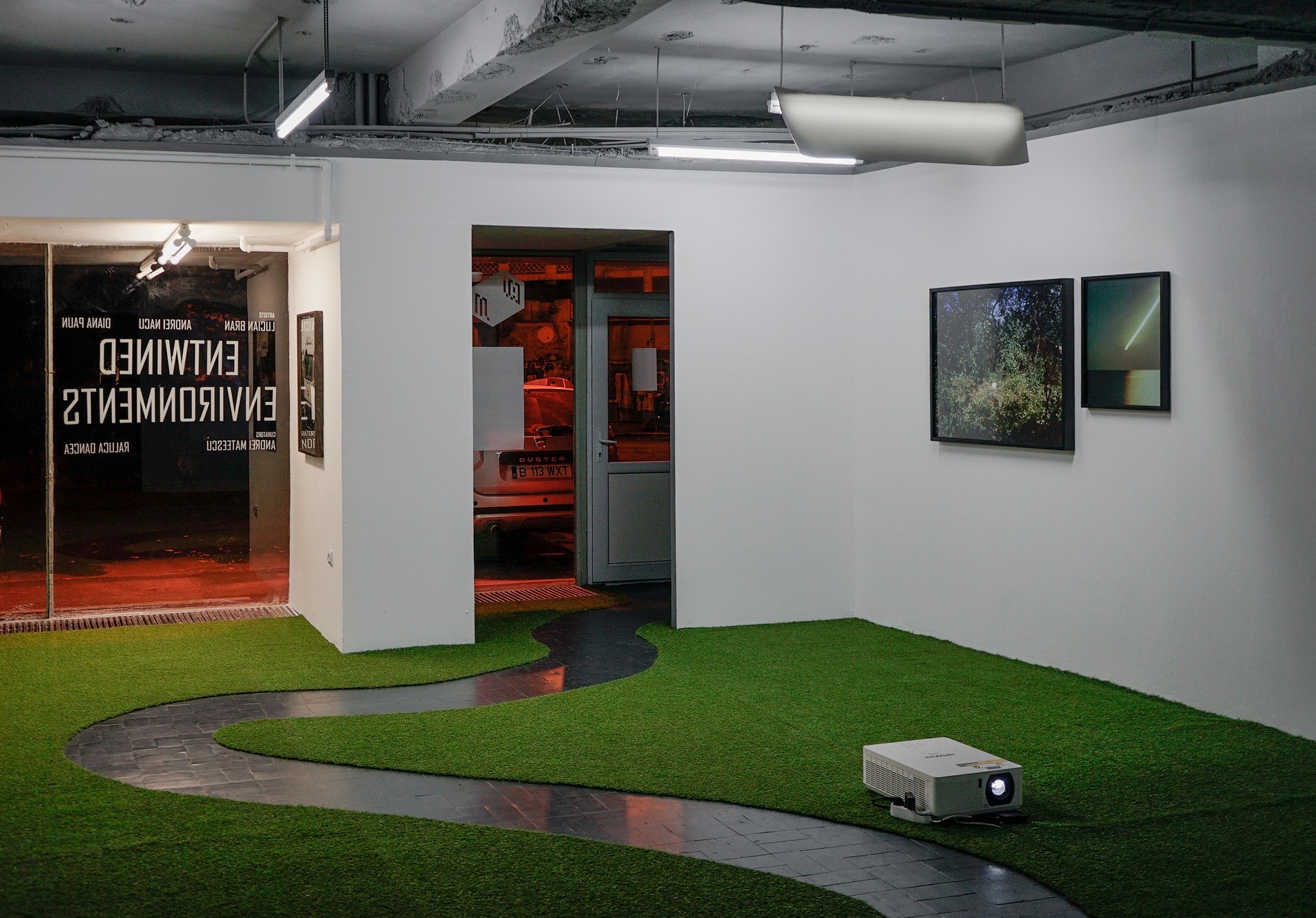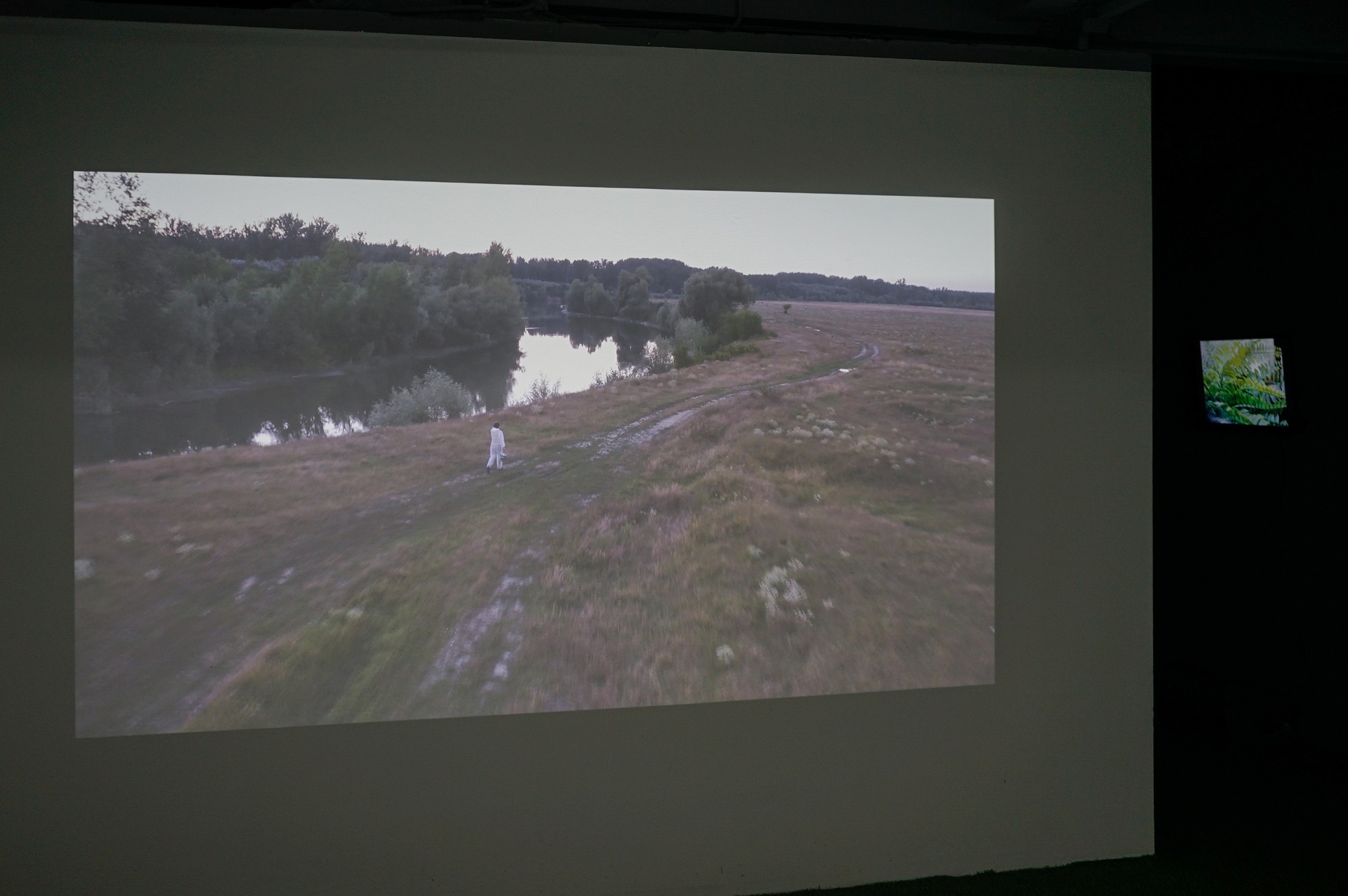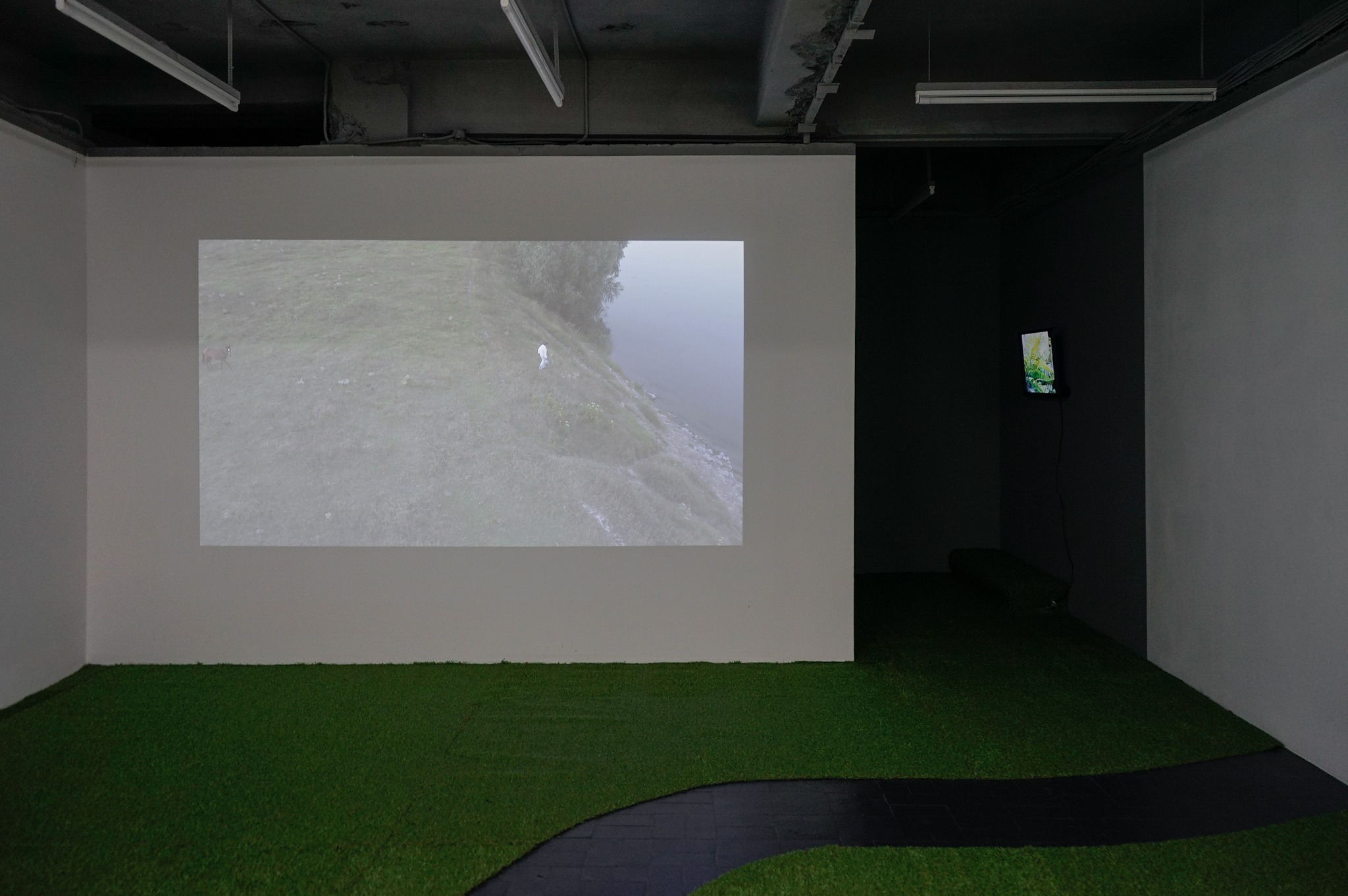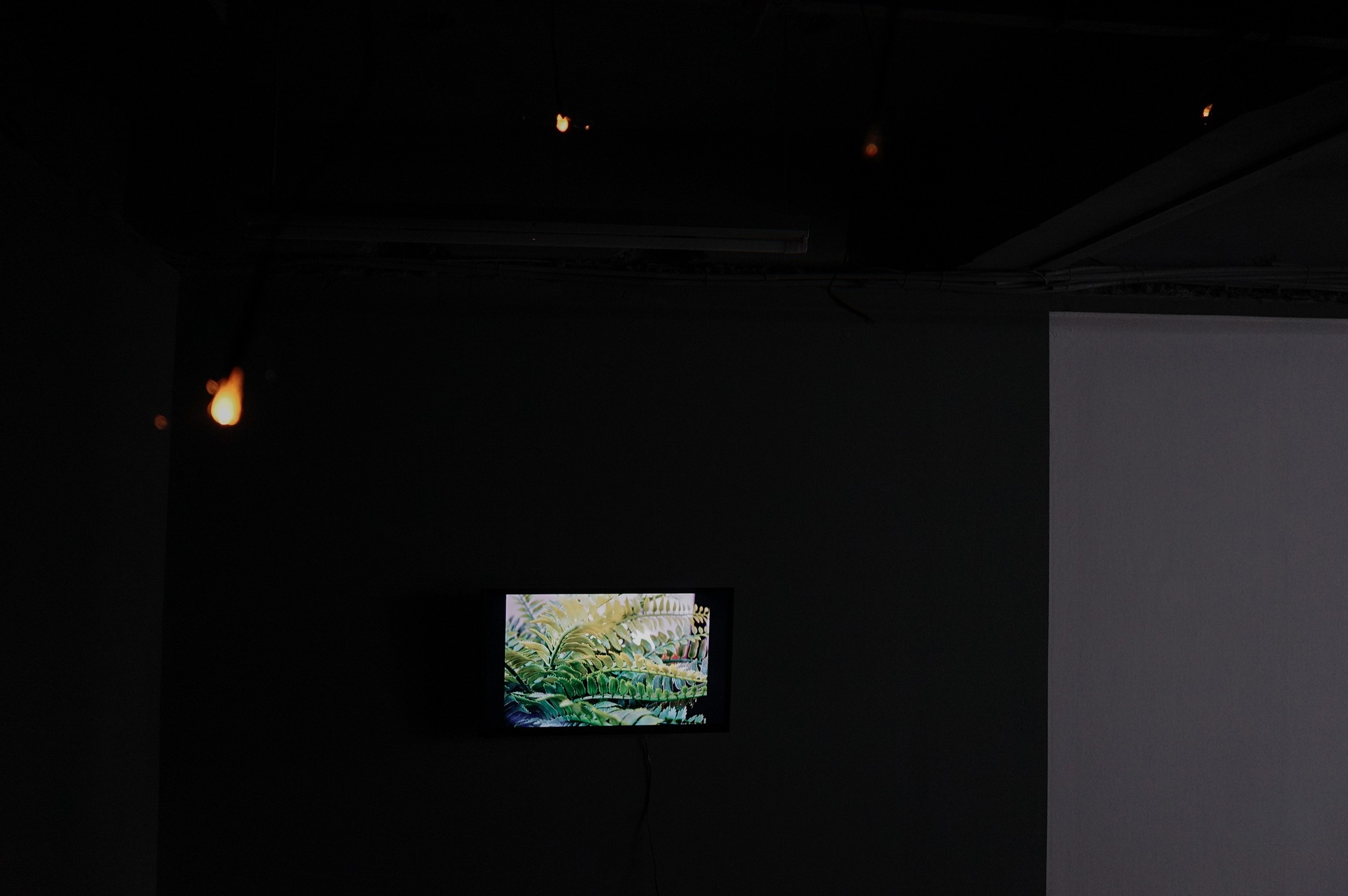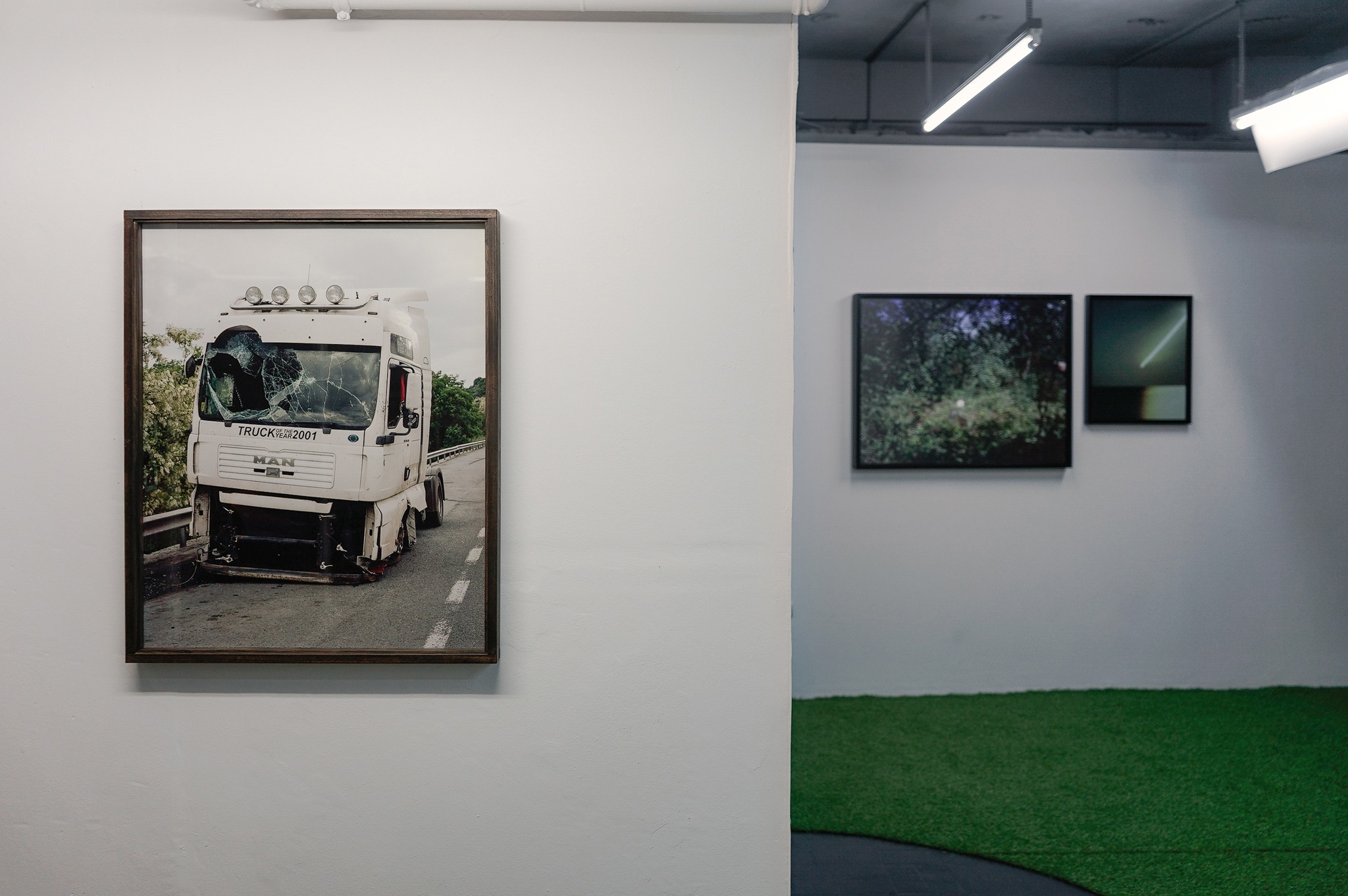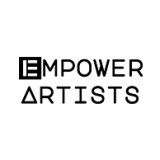Today, December 6, starting at 7 p.m., the “ENTWINED ENVIRONMENTS Part 2” exhibition will be closing at the Multimedia Visual Arts Center.
The exhibition “ENTWINED ENVIRONMENTS Part 2”, curated by Raluca Oancea and Andrei Mateescu, presents a new selection of artists who work with photography and film: Lucian Bran, Andrei Nacu, Diana Păun, and “continues the debate on existential living, the repositioning of man about nature and the whole spectrum of the non-human, in parallel with a questioning of the technical image medium.
Andrei Nacu thus investigates in the project … Except in the context of time… (2017) the phenomenological and political notion of the limit that refuses to separate, of the border that unites. Starting from the assumption that for phenomenologists the body exists only in the world, as an extension of our ability to touch and penetrate the natural and urban landscape, the artist chooses to measure with his own body the closest area that separates Romania from the Republic of Moldova, a portion of only 160 meters from the proximity of Sculeni customs.
We note in this context that today, amid a geopolitical crisis, when the position of a river changes the fate of a war, the synonymy between being and living, man’s dependence on inhabited territories and landscapes becomes more visible than ever.
The contemplative footage made by drone, in which the artist walks the distance between two states and two banks of the Prut River, taking water from upstream to pour it downstream, juxtaposes a dual questioning of the video medium and the human individual both ultimately reducible to the empire of duration (film as a sculpture in time, man as a temporal opening in which things can be shown).
Lucian Bran, in the docu-fiction “Arrow, flower, fire”, in turn, investigates the possibilities of expression of the “boring landscape with a hidden aura” in parallel with those of representing reality in the post-photographic era. Started as a documentary approach under the rule of objectivity, the story of meteorites recorded by the scientific organization Meteorite Society gradually turns into the story of non-human agents landed from nowhere (in one photograph, three boulders reflected by a circular mirror, on the bottom of a river, suggest a possible “face”) or in that of the memories that the people of the places keep about the unusual events.
Once the project slides from facts to fiction, the focus shifts to people’s desire to be integrated into local myths and cosmic scenarios, to the force of media affects but also to the artists’ need to encapsulate in their works experiences, unusual affects that the people of the time can absorb them and experience them (from the haughty melancholy of Eminescu’s Vesper/ Luceafăr to contemporary nihilism and stubborn ignorance of the nuclear threat).
Last but not least, the Possible Future 1.0 project by the artist Diana Păun, starting from an archive of photos of plastic leaves and flowers, questions the possibility of the biological eye (see the stray bee on a simulacrum leaf), but also of the photographic eye, to still distinguish the natural from the artificial, creation from construction. Given the invoked link between being and inhabiting, a legitimate question would be how human identity will be affected if inhabited landscapes become entirely fabricated.
Confident that nature can take its revenge, we return with our thoughts to Venice where this summer, in the Italian pavilion, a sublime sea of fireflies enveloped and left behind a huge abandoned factory, taking note of Pasolini’s words: I would give the whole Montedison industrial empire for a firefly!” – text by Raluca Oancea
Design: Mihai Sovăiala
INTERVAL is a project of the SLOW-SYNC PH association and represents a program focused on photographic artistic practices and time-based media in Romania, with activities concentrated around the CAV Multimedia space in Bucharest. The approach aims to hold exhibitions, and workshops and generate discussions on the course and currents of thought specific to the local representatives of these art forms.
The “INTERVAL” project is co-financed by AFCN and does not necessarily represent the position of the National Cultural Fund Administration. AFCN is not responsible for the content of the project or how the results of the project may be used. These are entirely the responsibility of the beneficiary of the financing.
